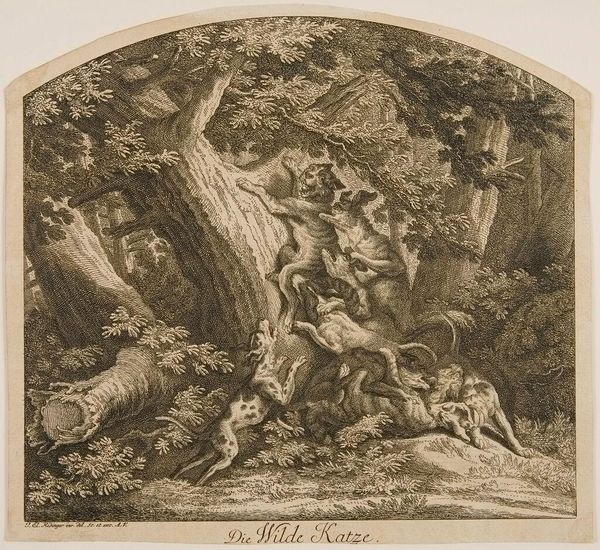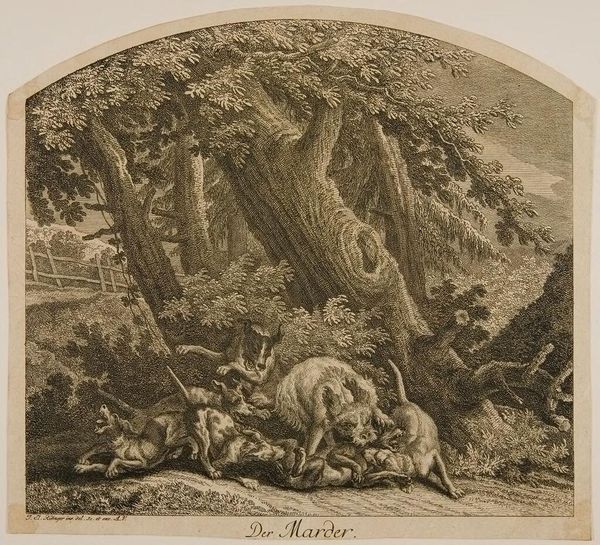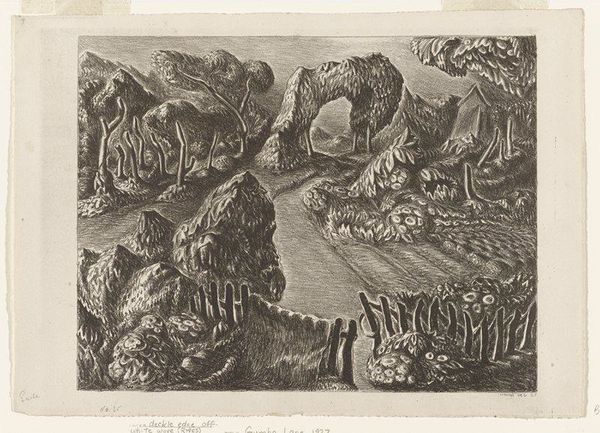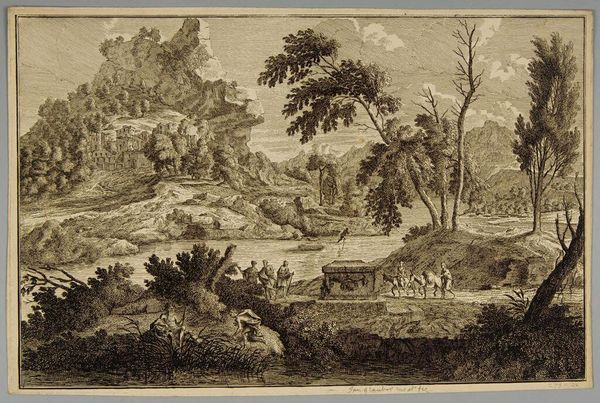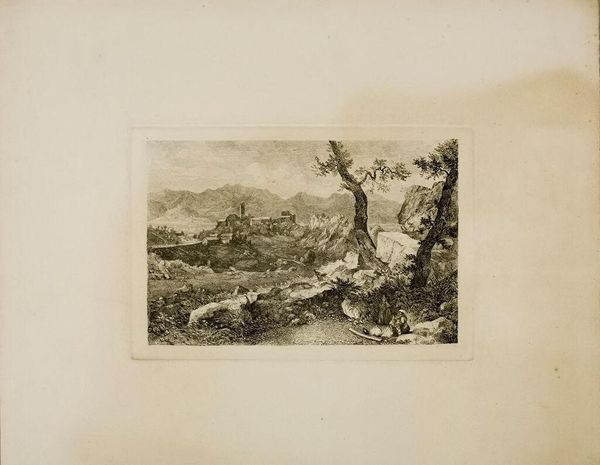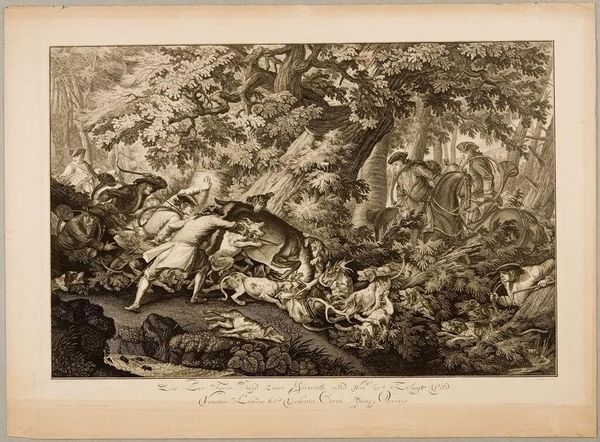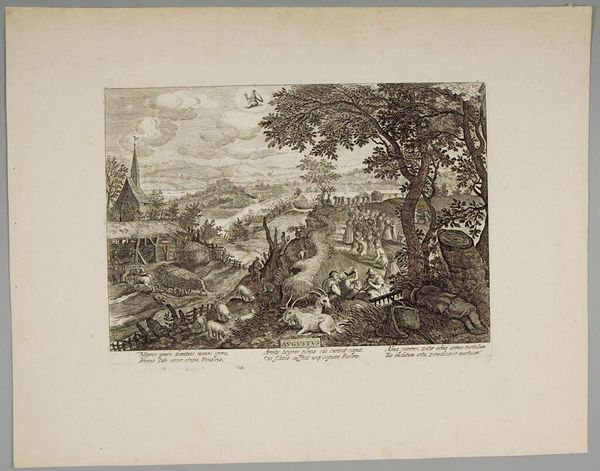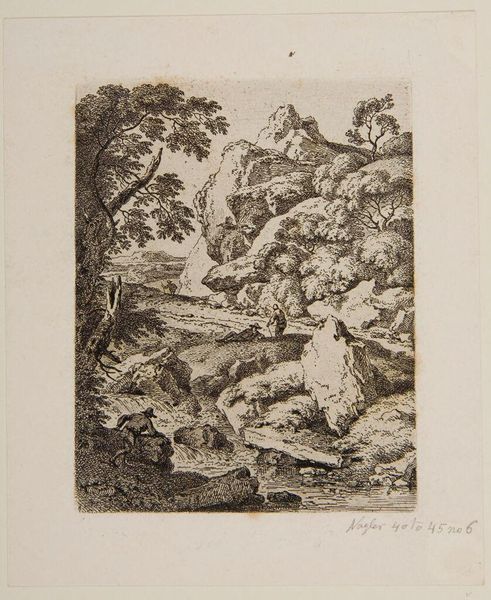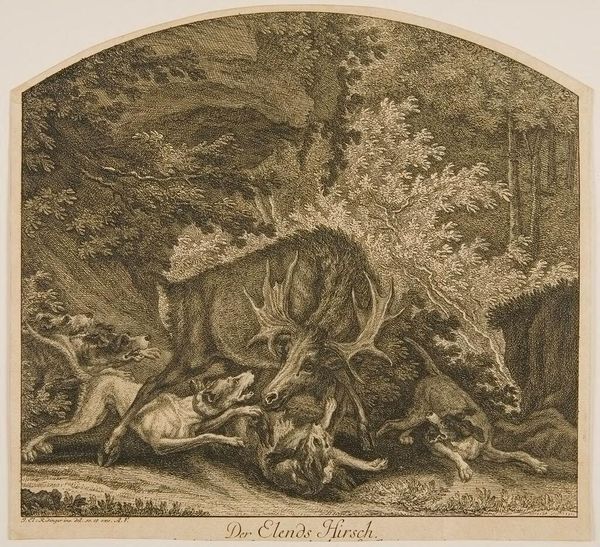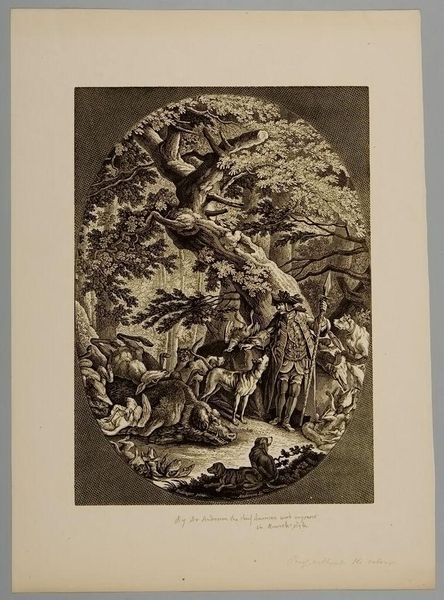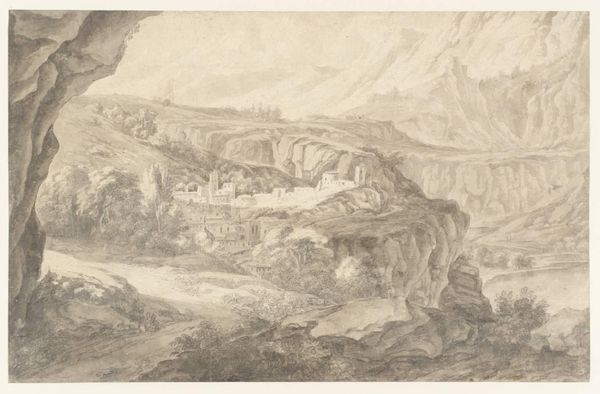
Wolf 17th-18th century
Copyright: CC0 1.0
Editor: Johann Elias Ridinger’s “Wolf” presents a chaotic pack amidst a dense forest. The scene feels charged with tension, almost as if we've stumbled upon a private drama. What do you see in this piece, especially regarding the wolves' symbolism? Curator: The wolf, historically, embodies both menace and wild freedom. Observe how Ridinger depicts their eyes—are they truly savage, or do you detect a hint of fear, reflecting perhaps humanity's own anxieties projected onto these creatures? Editor: That's a fascinating point. So, the image doesn't just represent wolves but our relationship with them? Curator: Precisely! This image operates as a mirror. The forest itself acts as a stage for our internal conflicts, the wolves playing roles we assign. It makes me wonder: What aspects of ourselves are we wrestling with? Editor: I hadn't considered the self-reflection aspect. Thanks, that really opens up the engraving! Curator: Indeed! These images are powerful precisely because they tap into our shared cultural memory.
Comments
No comments
Be the first to comment and join the conversation on the ultimate creative platform.
